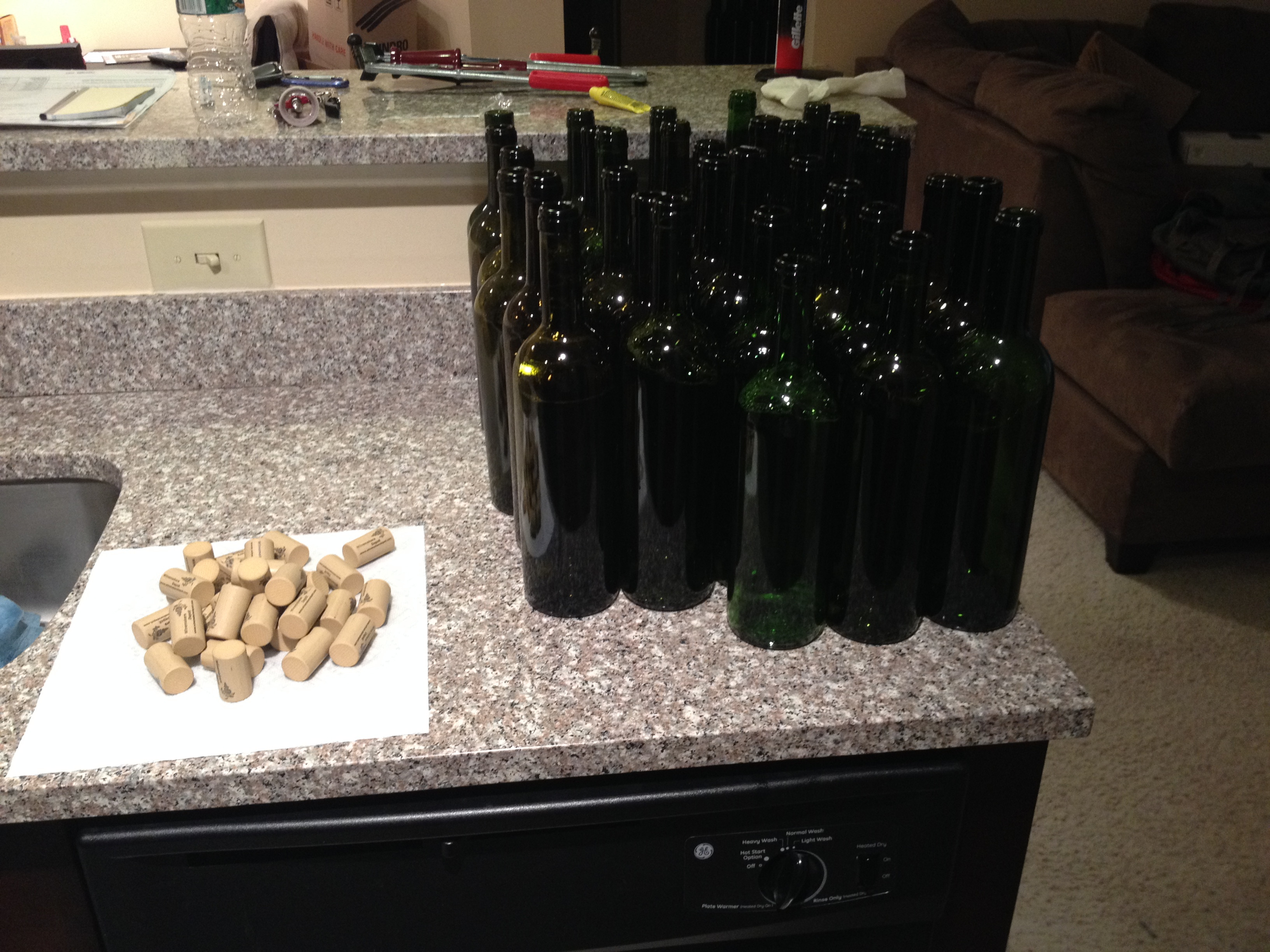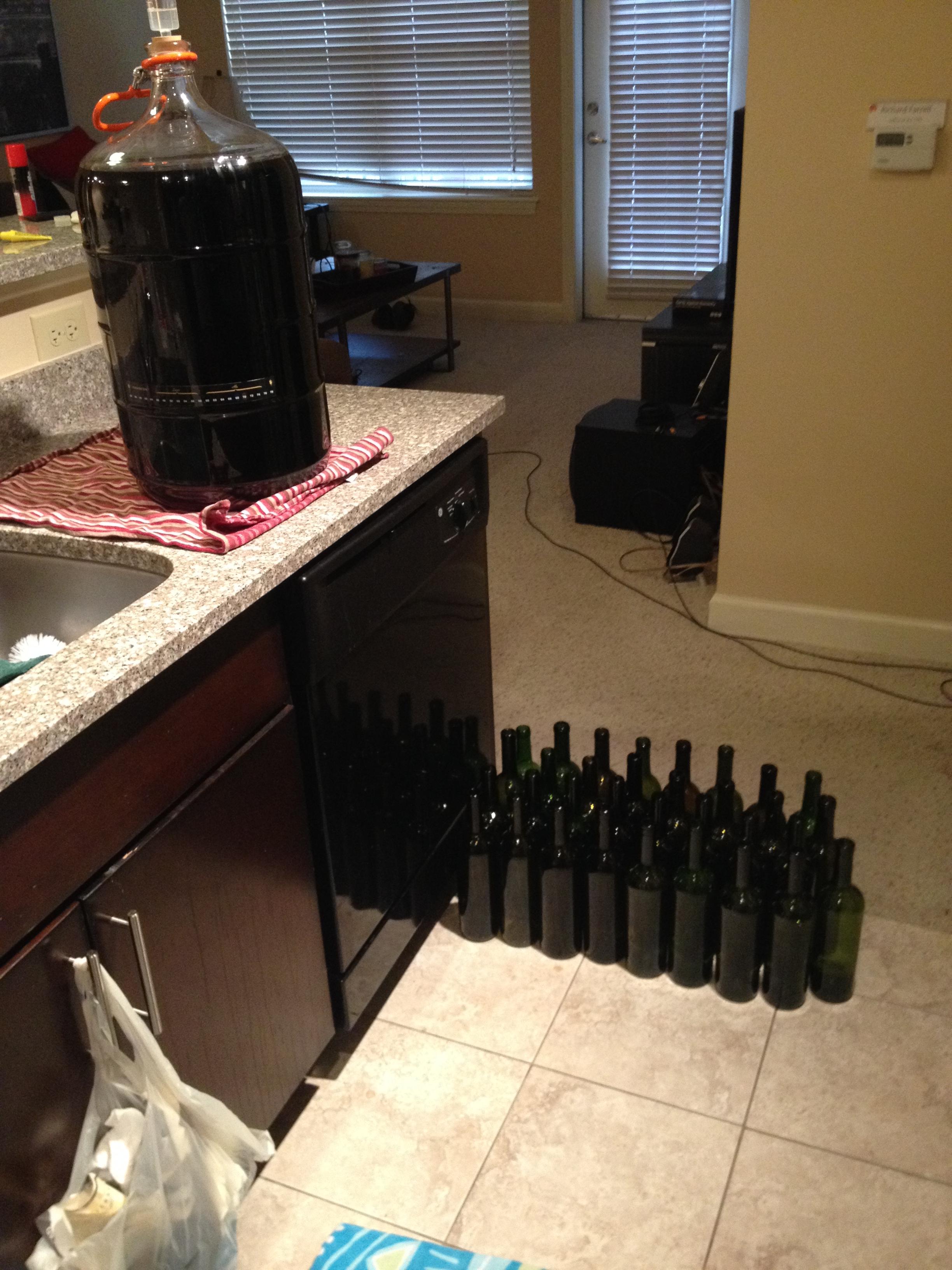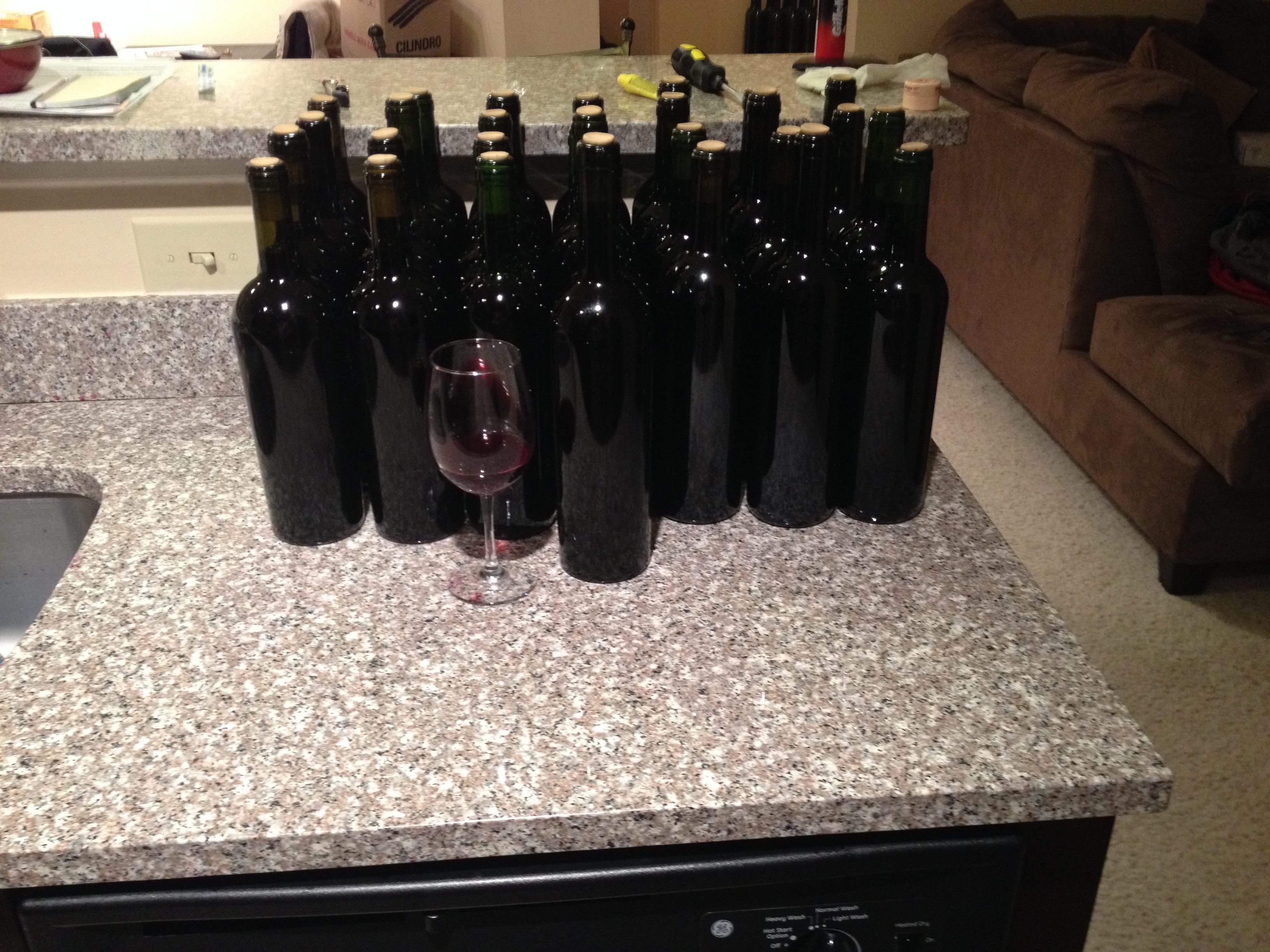Good Evening, Everyone. Here's an update for you.
I finished secondary fermentation and then added the fining agents and stabilizing additives. I've sat for 16 days. I racked off of the fine lees to a bottling bucket carefully avoiding splashing. I then bottled using my autosiphon and ferrari bottle filler.
I had several issues with the bottle filler, which worked perfectly on a previous batch of beer. I lost my siphon several times and would have to keep pumping away to get it back. I seemed to have wine getting around the seal at the bottom plunger of the autosiphon because the barrel of the autosiphon would be completely filled with wine, which was a PITA!.
Frustrations mounting, I got in a rhythm and was able to get 20 consecutive bottles filled and then ran into issues towards the end again.
Due to losses in me pulling the siphon in and out and emptying the barrel into the sink, I ended up with 29 bottles off of a 6 gallon batch.
Some pictures below. Now I wait a month and we shall see what I've done.
Bottles all cleaned and santized
Carboy moved up, getting ready to rack to bottling bucket.
Finished Bottles.
It also seemed that my hand-corker was leaving about 1/8th inch of cork out of the bottle. I shall see after three days and the corks have a chance to reform.








